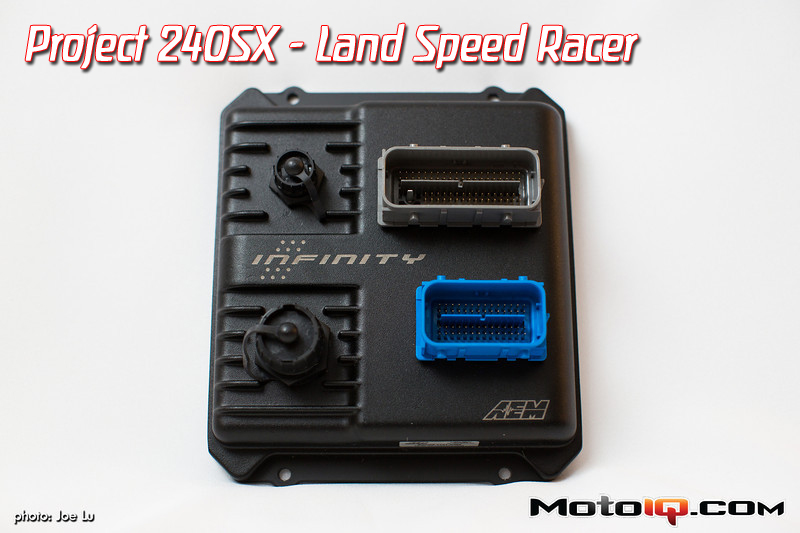,
Although committed to the switch, I still had some reservations and anxiety about whether or not the team could learn AEM's InfinityTuner software, get Project 240SX LSR to fire up, and then make the gobs of power we needed in time for Speed Week. Fortunately, I'm not alone in my anxieties as AEM has built a robust customer support system ranging from phone and internet support to a two day onsite course. This was all put in place to help builders and tuners get successfully acclimated to the new Infinity system.

In addition to the technical support, what we found is that ease of use is integrated throughout the InfinityTuner software. One of the best demonstrations of InfinityTuner's simplicity is its set up wizard which turns the usually menacing process of initial start up into a quick and straight forward process. In our case, we started by loading a Toyota Supra base map. Then, we used the setup wizard to help us begin defining the vital engine characteristics and tailor a bespoke map for our SR15VET 20V engine. Since our engine is a bit of a Frankenstein setup we did get stumped a few times during the start up process, but Beau Brown and Paul St. Clair of AEM's tech support helped us overcome those hurdles and behold, we had a running engine!

After the initial engine start, the starting process can be refined within InfinityTuner by populating tables for cold start strategies. We used the cold start features which trimmed lambda and fuel at different coolant temperature ranges. Since, we have never had any trouble with cold start.

With the initial start up complete, we turned our attention to tuning. The basic foundation of the InfinityTuner is composed of two complimentary tables, one for volumetric efficiency and the other for target lambda. We started with the target lambda table. What is lambda?

Lambda is the measure of mass ratio of air to fuel found in the exhaust stream. A lambda reading of one is considered stoichiometric, meaning a chemically perfect air fuel (A/F) ratio for a complete burn. A lambda reading greater than one indicates a lean mixture and less than one, a rich mixture. By knowing a fuel's stoichiometric value, an A/F ratio can be calculated out by multiplying the lambda value and the stoichiometric value. For example, .80 lambda multiplied by the stoichiometric value of pump gas of 14.7 results in an A/F ratio of 11.76:1. If we were to change to E85 which has a stoichiometric value of 9.8, the resulting A/F ratio given a .80 lambda would be 7.84:1. Working with lambda values instead of A/F ratios allows you to tune without knowing the fuels exact composition.

With the target lambda table complete, we turned our focus towards populating the volumetric efficiency table. The InfinityTuner uses a volumetric efficiency (VE) based tuning method. This means that it uses the VE of an engine combined with other variables like target lambda, injector data, and fuel pressure along with a bunch of fancy pants math formulas like the ideal gas law to calculate injector pulse widths.



